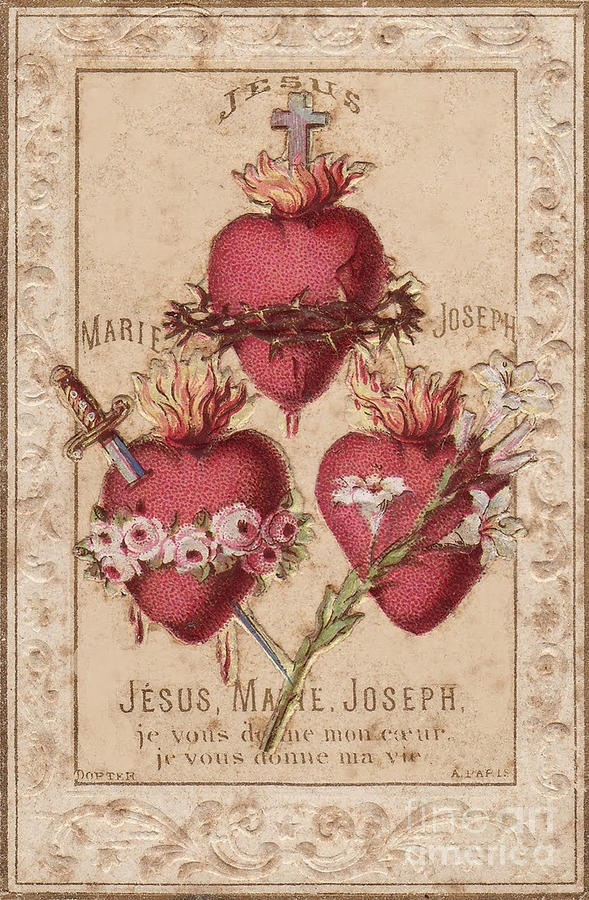_-_James_Tissot_-_overall_.jpg) |
| "The Magnificat" by Tissot |
Tomorrow is the feast of the Nativity of Mary. So much of what the Church teaches has been distorted in our times. The teaching on Our Lady's perpetual virginity is often misunderstood, as Fr. Mark* explained:
Even in the minds of many of the faithful, enfeebled by a forty year dearth of popular orthodox catechesis, a tragic confusion holds sway concerning the privileges of the Blessed Virgin Mary and, in particular, her virginity before, during, and after childbirth. There are many, alas, who, affected by various mutations of creeping Nestorianism and Arianism, have no grasp of what it means to call the Blessed Virgin Mary, Mother of God. Those who do not confess the privileges of the Blessed Virgin Mary, honoring them and celebrating them, fall inevitably into one or another of the classic Christological heresies.Fr. Mark further discusses this beautiful and ancient teaching, as follows:
Ever since the Council of Ephesus in 431, icons of the Mother of God have been marked by three stars: one on her forehead, and one on each shoulder, The three stars signify her perpetual virginity: before, during, and after the birth of her Son....More on this de fide teaching in the Catechism of the Catholic Church:Ancient liturgical texts reflect the language of the first great Christological councils of the Church. It was crucial, in the context of the prevailing heresies, to invoke Mary as Theotokos, Mother of God, or as Ever-Virgin. It was feared that by referring to Mary as a woman called simply by her ordinary name, something of the mystery of Christ, True God and True Man, might be obscured or compromised. The liturgy in both East and West reflects this ancient preference. While, in preaching and in works of devotion, we often hear the name of Mary without her theological titles, the liturgy calls her Sancta Dei Genetrix (Holy God-bearer) and Semper Virgo (Ever-Virgin).
The most ancient prayer to the Virgin Mother is the Sub tuum praesidium, found on an Egyptian papyrus from the 3rd century. It does not include the name “Mary,” but invokes her as Holy God-bearer (Sancta Dei Genetrix) and Virgin glorious and blessed, (Virgo gloriosa et benedicta).
The liturgy through the ages is consistent in confessing that God Himself is the author of Mary’s perpetual virginity. The same thought is carried over into the ancient rites for the Consecration of Virgins. Virginity, before being something offered to God, is a gift received from Him. It is a gift wholly ordered to union with Christ. Christ is the Spouse of Virgins; He is, at the same time, the blessed Fruit of a virginity received from God and offered back to Him. The liturgy does not separate virginity from motherhood. The virginity given by God is characterized not by sterility, but by an astonishing fecundity.
The deepening of faith in the virginal motherhood led the Church to confess Mary's real and perpetual virginity even in the act of giving birth to the Son of God made man. In fact, Christ's birth "did not diminish his mother's virginal integrity but sanctified it." And so the liturgy of the Church celebrates Mary as Aeiparthenos, the "Ever-virgin."Here are some beautiful quotes from Fathers of Church:
Believe in the Son of God, the Word before all the ages, who was...in these last days, for your sake, made son of Man, born of the Virgin Mary in an indescribable and stainless way, -for there is no stain where God is and whence salvation comes.... (St. Gregory of Nazianzen, Oration on Holy Baptism, 40:45; 381 AD)
According to the condition of the body (Jesus) was in the womb, He nursed at His mother's breast, He lay in the manger, but superior to that condition, the Virgin conceived and the Virgin bore, so that you might believe that He was God who restored nature, though He was man who, in accord with nature, was born of a human being. (St. Ambrose of Milan, Mystery of the Lord's Incarnation, 6:54; 382 AD)
Who is this gate (Ezekiel 44:1-4), if not Mary? Is it not closed because she is a virgin? Mary is the gate through which Christ entered this world, when He was brought forth in the virginal birth and the manner of His birth did not break the seals of virginity. (St. Ambrose of Milan, The Consecration of a Virgin and the Perpetual Virginity of Mary, 8:52; c. 391 AD)
(*Note: since this post was originally published fifteen years ago, Father Mark's blog is defunct but the quotes from him remain.)
 |
| "Birth of the Virgin Mary" by Giotto |
 |
| The Annunciation by Tissot |






















